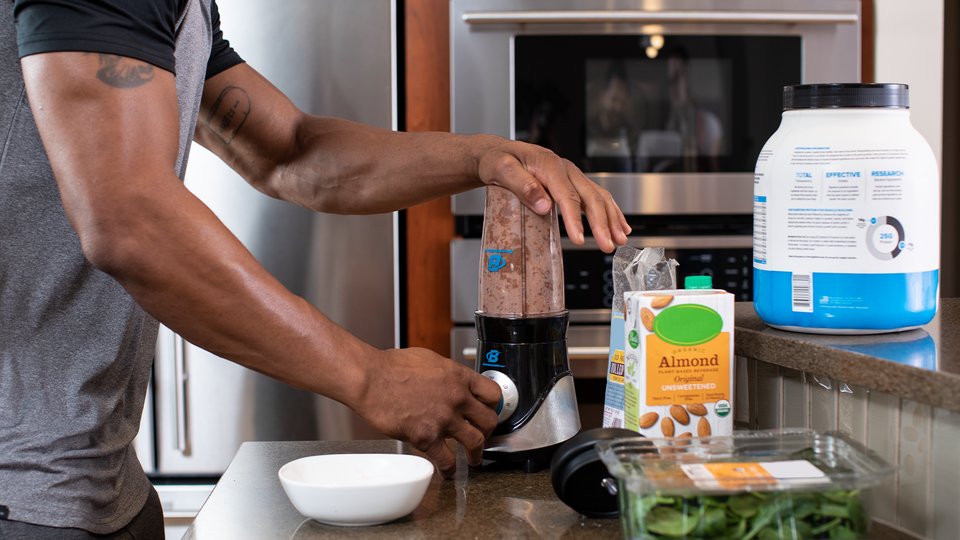Products You May Like
It’s easy to fall into a rut in your lifting routine, and the same is true for your protein shakes. If you’ve been using the same tired boosters in your shake and not seeing results, there’s a good reason for it. Protein powders are formulated to deliver the ideal ratio of macronutrients after a workout, but they don’t always focus on the micronutrients.
Why does it matter? Micronutrients, such as vitamins and minerals, are essential to muscle growth and repair. Post-workout nutrition is an opportunity to feed your muscles exactly what they need quickly and deliver otherwise hard-to-get nutrients in a convenient shake. If you know what to add to your protein powder, you can customize your shake to give your body exactly what it needs.
Here’s a list of the top protein shake additions that you’re probably not using, and why you should start adding them today.
1. Turmeric
Turmeric has long been used in traditional medicine for its purported anti-inflammatory properties, and in modern times it has graced the pages of many a health-themed Instagram feed.
The primary active component of turmeric is curcumin, which studies indicate may help suppress the factors that lead to inflammation.[1] Though this bright yellow spice appears in many traditional Southeast Asian dishes, the doses needed to produce any significant effect are much higher than would be found in a single meal and can only be obtained through supplementation.
To boost your shake, add 1/2-1 teaspoon of turmeric powder and a pinch of black pepper prior to blending. The piperine in the black pepper helps make the curcumin more bioavailable.
Thinking outside the shaker, you could also try this delicious turmeric latte recipe—the perfect way to help your body recover faster after a workout and use up your cold leftover coffee.
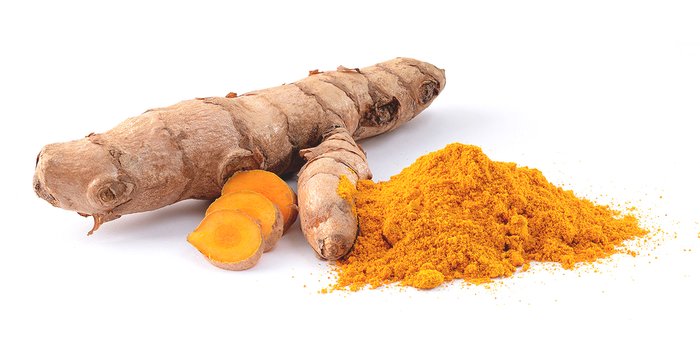
Turmeric Latte
Want to get more out of your morning cup of joe? This recipe is the perfect way to use up leftover coffee and give your body a healthy boost. Turmeric contains compounds that have both anti-inflammatory and antioxidant properties, while the maca powder is a natural energy booster. Almond milk provides a dairy-free base, but you can substitute your milk of choice.
2. Baobab Fruit
The fruit of the baobab tree is commonly eaten in Africa and Australia and has a citrus-like flavor. It is high in vitamin C, antioxidants, potassium, magnesium, iron, and zinc, and its leaves are rich in calcium and protein. Even the seeds are loaded with fat and healthy fiber, and powdered forms of this potent plant are available around the world.
Baobab fruit is associated with many health benefits. For one thing, it aides weight loss by promoting feelings of fullness and helping to slow the absorption of sugar into the bloodstream.[2] Its potential benefits make this southern-hemisphere treat a perfect booster to your weight-loss shake. Just add a scoop of baobab powder to your protein shake, or if you prefer, try the recipe below.
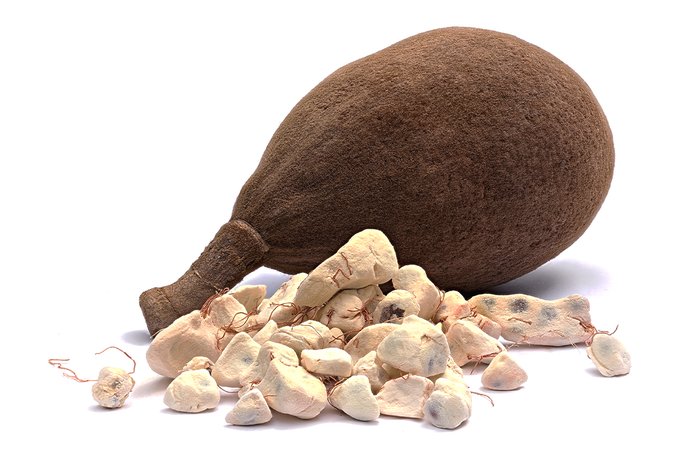
Carrot-Orange Baobab Drink
Loaded with antioxidants, this simple bright-orange drink is bursting with nutrients and flavor. Baobab powder has more antioxidants per serving than blueberries, acai, and goji, and carrots and oranges are great sources of beta-carotene and vitamin C. Fresh ginger helps with digestion in addition to adding a zing to this flavorful four-ingredient drink. If you don’t have a juicer, you can use a high-powered blender and strain with a cheesecloth.
3. Plant-Based Omega-3s
While health experts have touted the benefits of omega-3 fatty acids for years, we don’t often discuss the different sources of this supplement. Fish oil has become all but synonymous with omega-3s, but the plant-based versions may actually be easier to incorporate into your diet.
Flaxseed is 42 percent fat, and most of that comes in the form of alpha-linolenic acid, a precursor of omega-3 fatty acids. ALA has many potential health benefits, specifically the ability to reduce blood triglycerides and reduce the inflammatory response, both of which help fight heart disease. Unlike its fishy counterpart, flaxseed also offers a good source of both soluble and insoluble fiber. Since all the goodness is inside the seed, add 1-2 tablespoons of ground flaxseed or flaxseed oil to your shake instead of whole seed. If you’d rather chew your omegas, check out the slow-cooker superfood protein bars below.
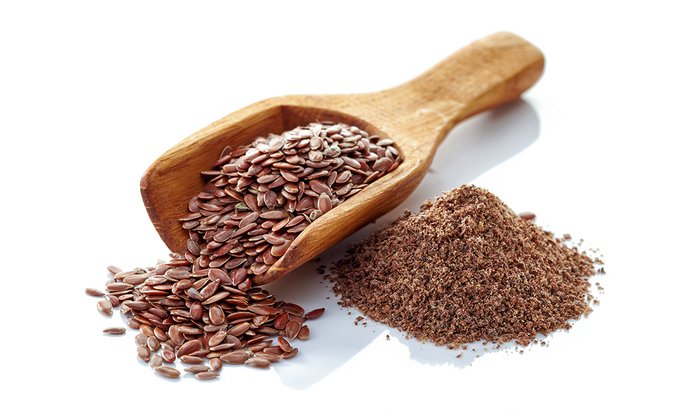
Slow-Cooker Superfood Protein Bars
Flaxseed is a fantastic healthy addition to any baked good, providing extra fiber, nutrients, and healthy fats. These homemade bars take it to the next level by combining ground flaxseed with cashew butter, oats, and plant protein to create a delicious, chewy, gluten-free high-protein snack. Add the extra flavor and superfood punch of blueberries, cacao nibs, and cinnamon, and you’ve got yourself a healthy on-the-go treat to fuel your body and help you hit your goals.
4. Prebiotics
Prebiotics are a type fiber that the human body cannot digest. They are food for probiotics—hence the name. Since probiotics support healthy gut bacteria, including prebiotics in your diet is the key to better gut health.
Whole-food sources of prebiotics include dandelion greens, garlic, onions, leeks, asparagus, bananas, barley, oats, apples, wheat bran, and cocoa. While some sources of prebiotics make more sense in a salad than a shake, adding a tablespoon of cocoa powder is an easy and delicious way to boost the prebiotics in your smoothie and feed the good bacteria in your gut. If you’d rather have a warm cup of cocoa, give this PBfit hot chocolate recipe a try.
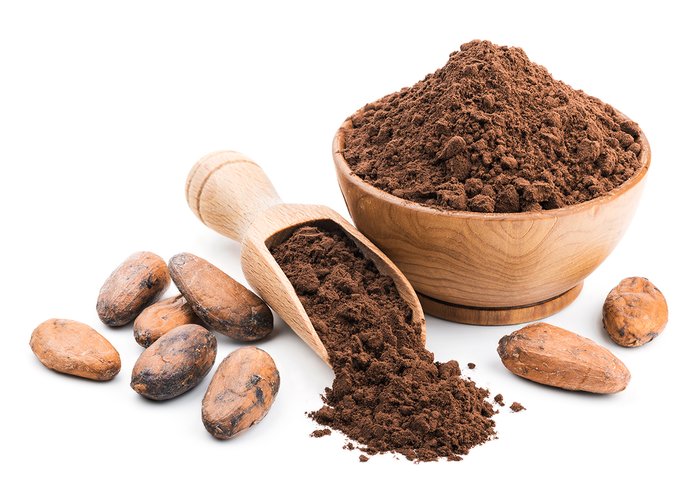
PBFit Hot Chocolate
While some sources of prebiotics make more sense in a salad than a shake, adding a tablespoon of cocoa powder is an easy and delicious way to boost the prebiotics in your smoothie and feed the good bacteria in your gut. If you’d rather have a warm cup of cocoa, give this PBfit hot chocolate recipe a try.
References
- Takada, Y., Bhardwaj, A., Potdar, P., & Aggarwal, B. B. (2004). Nonsteroidal anti-inflammatory agents differ in their ability to suppress NF-κ B activation, inhibition of expression of cyclooxygenase-2 and cyclin D1, and abrogation of tumor cell proliferation. Oncogene, 23(57), 9247-9258.
- Coe, S., & Ryan, L. (2016). White bread enriched with polyphenol extracts shows no effect on glycemic response or satiety yet may increase postprandial insulin economy in healthy participants. Nutrition Research, 36(2), 193-200.
